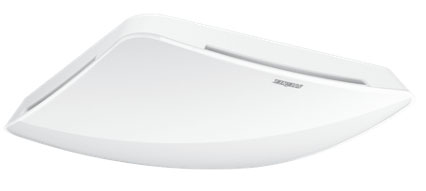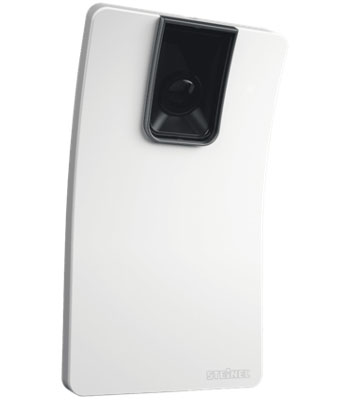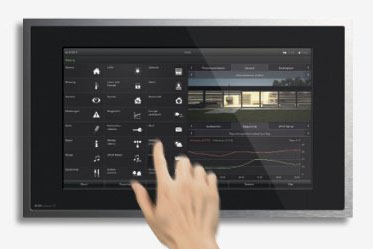
By Mark Warburton, Ivory Egg.
One of the immediate impacts that the pandemic will have on our industry is changes to the specifications on new projects. Even if the current coronavirus crisis comes to a quick close (which looks increasing unlikely), building specifications are still likely to be adapted to include some of the lessons learnt. After all, COVID-19 is not the first coronavirus to have an impact on the human population; SARS and MERS are both from the same family of virus. Nor is it likely to be the last.
An obvious change is to make buildings as contactless as possible. Whilst this is not difficult to achieve in larger open spaces, it is much more difficult in smaller offices or buildings whose usage naturally requires privacy. The first step to achieve contactless design is being able to determine when someone is entering or leaving a space, be that open or enclosed, and the ability to monitor much more accurately if people are still in a space.
Contactless operation
KNX offers a perfect solution for contactless operation with products such as the Steinel True Presence detector. Using microwave sensing technology that is tuned to the movement signature of a human breathing, the sensor offers extremely accurate presence information as well as outputs based on direction of movement and distance to movement. With motorised doors and intelligent lighting and HVAC, it would be simple to create a completely contactless environment as people move through a building and use different spaces.

Another product from Steinel offers a neat solution to manage social distancing. The HPD 2 is a camera sensor which is able to determine the number of people in a room or in defined areas of the room. It could be used to provide feedback when additional people enter a shop, move from one part of a building to another or to increase the ventilation to ensure fresh, clean air is provided in more confined spaces.

As a scenario, in a high-rotation office space, a group of people have booked a meeting room. They enter the room, which has been brought up to temperature for them ten minutes before the meeting is due to start, and the lights turn on as they enter. They log in so their presence is recorded, and the system adjusts based on the number of people actually using the room. Then, after the meeting, the absence of people in a room might be used to trigger the cleaning crew to enter and wipe down the surfaces, so making the transition to the next users less risky.
Air quality
Managing the quality of the air in the building is another area where building controls have a major role to play. This requires a shift in mindset from HVAC being as efficient as possible to it being able to perform at a level which maintains the highest levels of filtration and air changes. This transition will take time, but as this white paper from HMS Intesis suggests there are some immediate ways that existing systems can be used to help control the spread of airborne virus inside. For this to work, a high level of control is needed over the AC systems and possibly a high level of integration with existing BMS systems, both of which HMS Intesis has proven solutions for.

Facilitating BYOD
The ability for occupants to interact with a building will also have to change, particularly as our understanding of the steps we will need to take to remain safe become second nature. Of course, this is ideally done on your own devices, as anything else just adds risk – which requires more management from the building managers. The concept of BYOD (Bring Your Own Device) will become more common, so never has it been more important for building control systems be designed in a way that allows seamless integration from any range of devices or external systems. Which is why it’s fantastic to see all the main open standards for building control creating a new market interest group to work on creating just that – a method for creating application layer agnostic, secure IP connectivity to a building.
User management
Another approach is to install a server-based solution that offers user management as part of its feature lists. Whilst often considered part of the facility management, a hybrid solution that provides building-wide visualisation and control along with lower-level control of individual rooms or functions, will keep the project cost down and still offer a high level of functionality. The Gira Facility server is one example, and with the ability to limit access to certain users or user groups, as well as apps for mobile devices and a desktop interface, it provides a comprehensive solution for both managing the installation and controlling it.

Conclusion
It is only when we treat internal spaces as a single environment that we can really achieve the level of control needed to meet some of these newer requirements of building design. Having a holistic approach to control system design, with systems sharing a single infrastructure, ensures that data from a sensor can be used across the system, regardless of the application. Ideally, this should also be a system that can be adapted over time, or even pivoted quickly to provide a completely different type of functionality.
Whilst we may not be able to see into the future, we can use lessons from the past to ensure that the systems we install and design provide the highest level of adaptability and control.
Further recommended reading
‘Horrible’ offices look to tempt back workers, by Padraig Belton.
Mark Warburton is the Technical Director of Ivory Egg (UK) Ltd, a supplier of leading KNX products and provider of KNX training courses.












